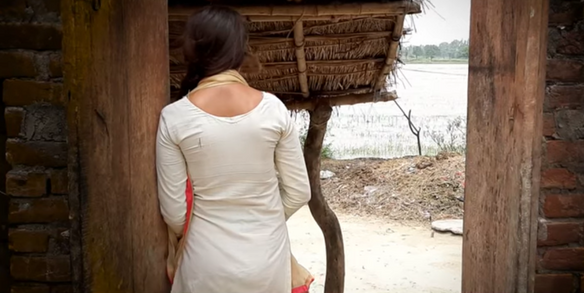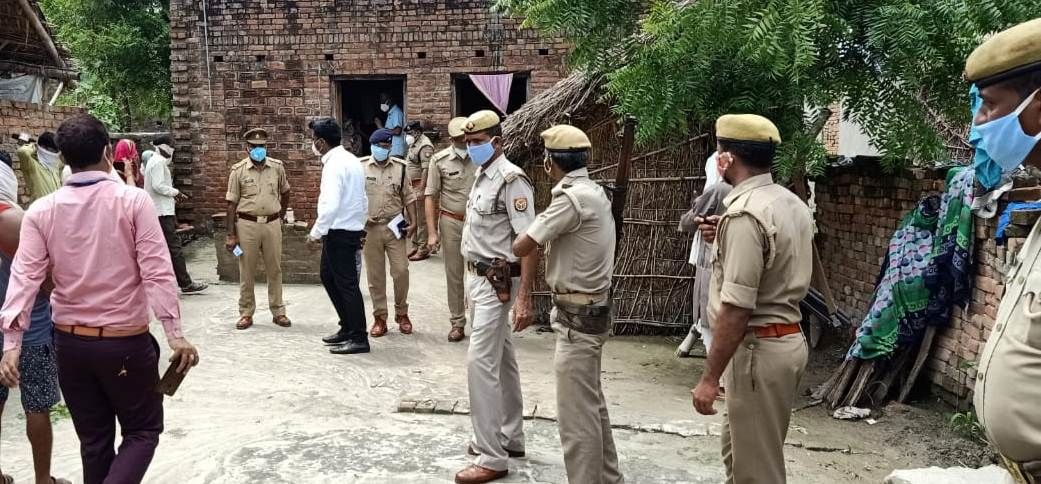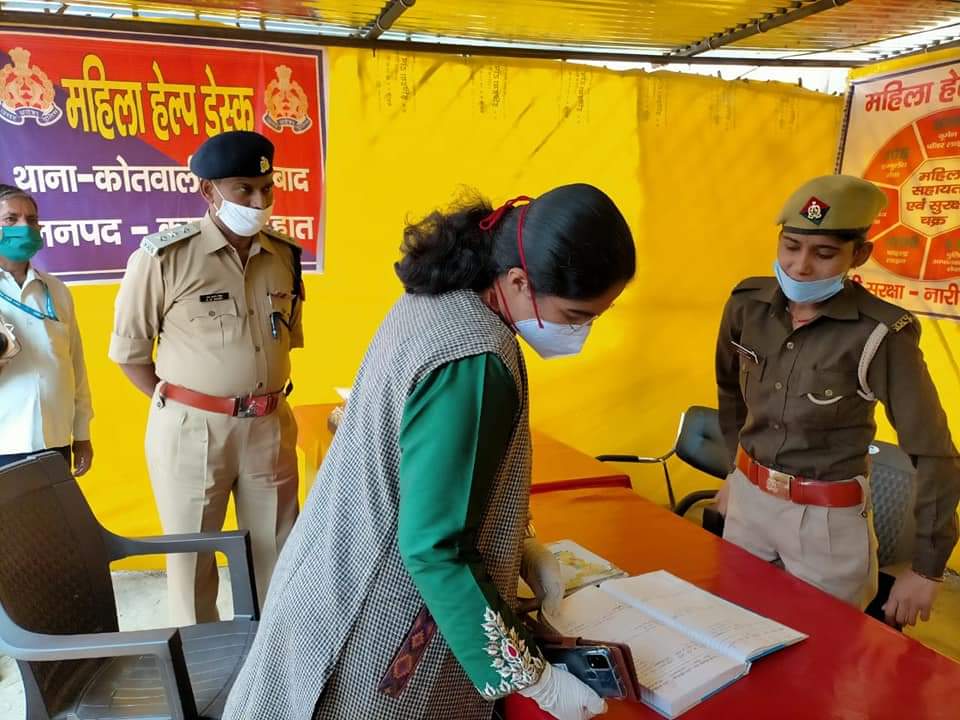Crime and Punishment: Gender violence survivors will benefit only if the police force adopts reforms
Outdated laws, under-utilised funds, staff shortage, inadequate infrastructure -- reforms in the police force are needed if crime against women has to be addressed.


Twenty-one-year-old Nikita Tomar, a college student in Ballabhgarh, Haryana is the latest victim of growing crime against women in India. On October 21, as she resisted an abduction attempt, she was shot dead outside a college in Faridabad where she had gone to write her B.Com exam. Both the accused have been arrested by the police. Her family alleges the accused had been stalking her and had even kidnapped her two years back when a police complaint was also filed.
According to the National Crime Records Bureau (NCRB), under the Union ministry of home affairs, the crime against women is on the rise in the country. As per its latest report, Crime in India 2019, the reported cases of crime against women increased from 345,989 cases in 2017 to 391,601 in 2019.
In a large number of cases it is found that the victims had already approached the police and filed a complaint against teasing or stalking. But often these complaints weren’t acted upon leading to gruesome crime.
The situation is worse in the case of rape survivors who face ridicule and humiliation when they muster enough courage to approach the police to file a first information report, or FIR. The list of expletives, with which rape victims are routinely addressed in police stations, is long and obscene.
“The rape victim is put through further hell as she is repeatedly asked insensitive and inappropriate questions,” Rajim Ketwas of the Dalit Adivasi Manch, based in Pittora, Mahasamund district in Chattisgarh, told Gaon Connection.
“Many times the police look on rape as the victim’s fault. She is labelled as ‘cheap’ or ‘loose’ or ‘immoral’. This attitude colours the language they use,” Sylvia Karpagam, public health doctor based in Bengaluru, Karnataka, explained to Gaon Connection. A collection of essays called Voice against Caste Impunity: Narratives of Dalit women, that Karpagam has collated, discusses how the mind-set among the dominant castes make them feel they can get away with anything, whether it be rape, or conducting an investigation.
As per the NCRB 2019 report, on an average, 88 rape cases have been reported in India every day in 2019. Of the total 32,033 reported rape cases in the year, 11 per cent were from the Dalit community. But the fear of social stigma keeps most victims and their families quiet and away from the police.
One of the common reasons why criminals don’t get punished is the poor police investigation. Recently, there was national outrage over police behaviour in the Hathras case, where the body of the rape victim was cremated in indecent haste, allegedly without the family’s consent. The police came out very poorly in the whole episode, in their insensitivity and attitude.
“The police are in denial. Lack of training has resulted in such behaviour abnormality. Earlier, be it for the daroga or the sipahi, there was a mandate of a year’s training in the institute and six months training in the field. Now, they are given training for only six months,” R K Chaturvedi, retired Inspector general of police, Uttar Pradesh, told Gaon Connection.
The NCRB 2019 data shows the conviction rate for rape cases is as low as 27.8 per cent. In other words, out of 100 accused, only 28 get convicted. The collection, transport and storage of forensic evidence — a key component in rape cases, by police is also often poorly conducted. This results in weak prosecutions, few convictions and lenient jail terms for convicted offenders.
For instance, last May, Sugna Valmiki (name changed), was gang-raped by four men in her village in Sandeela, Uttar Pradesh’s Hardoi district, as she was returning from school. “I went to the police at 7 pm. They made me sit there in that condition until 11 pm. Still, nobody wrote the FIR. They accused me of lying,” Valmiki recalled her traumatic time at the station. The FIR was finally registered the following day.

Recall the Unnao rape case, when the 23-year-old victim ran from pillar-to-post to get an FIR registered after she was allegedly gang-raped in December 2018. She had lodged a complaint the very next day but an FIR was not registered. The case was finally registered three months later in March 2019 on the court’s direction.
Dealing with cases of rape seem to highlight the problems of insensitivity and laxness in the police force. “Last year, a 17-year-old girl was found by the roadside at Bhairopur village. She could barely walk, but was forced to accompany the women police to the crime scene,” recalled Ketwas who described the method of interrogation as relentless and ruthless. “Where were you? Who did this to you? How did they do it…, these were the questions thrown at the victim. And at the end of it, all they said she must have done it for money,” Ketwas narrated the painful episode to Gaon Connection.
However, on being contacted, a constable in Prayagraj, Uttar Pradesh told Gaon Connection: “We ask normal questions – ‘Why did you go there’, ‘how did it happen’, ‘where did you go’, and so on. It is necessary we ask the victim some things repeatedly just so we make no mistake in recording their statement.” He also accused the victims of sometimes ‘exaggerating’ or ‘manipulating’ the police.
According to Chaturvedi, who has served in the police force for over 35 years, there is an urgent need for police reforms if crimes against women have to be curbed. Speaking about the Uttar Pradesh Police, he said: “The UP Police does not have the capacity to train more than 6,000-8,000 recruits, still they are taking in as many as 30,000 people into the force.”

Need of police reforms
The Indian policing system suffers from its century-old recruitment process. During the training process, the overall focus is on enhancing the physical strength of the trainees but other essential skills like forensics, law, cyber-crime, financial frauds are ignored.
According to Chaturvedi, the acts governing the police are also hopelessly outdated. “We still abide by the 1861 Police Act and 1872 Police regulation. We have not changed the working pattern of police since then,” he stated.
According to a report, Police Act, 1861: Why we need to replace it, by the Commonwealth Human Rights Initiative, the 1861 Act needs to be replaced with legislation that reflects the democratic nature of India’s polity and the changing times. In its present form, it is weak in almost all the parameters that must govern democratic police legislation, and has made it easy for others to abuse and misuse the police organisation.
The existing police infrastructure is inadequate to cater to the needs of the police force. A huge human power shortage in the police department is also to be blamed.

According to Bureau Police Research & Development , Ministry of Home Affairs, 2019, currently there are 198 police officers per lakh population in the country, which is less than what is recommended by the United Nations — 222 police officers per lakh population. This results in overburdening of work that reduces the effectiveness and efficiency of the police personnel and leads to psychological distress which contributes to various crimes committed by the police force.
Another problematic area is the available communication networks to the force. A good reliable communication system is important for the effective functioning of police organisation. The Bureau Police Research & Development data of 2019 shows that across all states and UTs, there are 200 police stations which do not have wireless/mobile.
The data also highlights the underutilisation of funds allocated under the Modernisation of Police Forces (MPF) Scheme. The total budget allocated to police in all the states/union territories in 2017-18 was Rs 1,27,275.27 crore but the total police expenditure was Rs 1,18,211.24 crore. This shows that the budget was underutilised.
Twenty four years ago, in 1996, two retired Director Generals of Police, Prakash Singh and N K Singh filed a public interest litigation in the Supreme Court of India to implement National Police Commission recommendations. Seven directives were suggested for reforms.
These seven directives include setting up of State Security Commissions to ensure that the state government does not exercise unwarranted influence on the police, fixing the tenure and selection of the DGP, a minimum tenure for the Inspector General of Police, separation of investigation and law and order functions, setting up of Police Establishment Boards, creating a Police Complaints Authority and forming a National Security Commission.
In 2006, the Supreme Court asked states and Union Territories to comply with these directives. In 2010, the Supreme Court issued notice to four states- Maharashtra, Uttar Pradesh, Karnataka and West Bengal for total non-compliance.
As per the Commonwealth Human Rights Initiative (CHRI) report, 2020, not even one state or Union Territory is fully compliant with the apex court directives. Majority of states are non-compliant with most of the directives.
“These reforms are very important, as they make the police independent, give the board the authority to decide transfers and postings, and ensure proper training module changes,” said Chaturvedi. “But we need to change the mentality along with reforms if we want to see visible changes. It is a long process,” he warned.

The status of policewomen
Policing has traditionally been considered a male job, and both men and women hold patriarchal ideas about women’s capabilities in this field. This is supported by the Status of Policing in India Report, 2019, which shows women make up only 7.28 per cent of India’s police force. Of these women, 90 per cent are constables, while less than one per cent hold supervisory positions.
The Status of Policing in India Report 2019 shows one in five women police personnel report not having a separate toilet for women at their station. Policewomen are likely to maintain registers, file FIRs, and do other in-house tasks while their male counterparts conduct investigations, patrol, and provide VIP security.
A large number of crimes reported show the police are poorly organised to deal with serious crimes, particularly those against women. And it does not make it any better if there are policewomen conducting the rape investigation.
“If violence and aggression are part of the larger patriarchal police behaviour, it is unlikely that the women police will deal with victims more sensitively. The only advantage of women police is that the risk of sexual abuse on the victim comes down,” said Karpagam.

